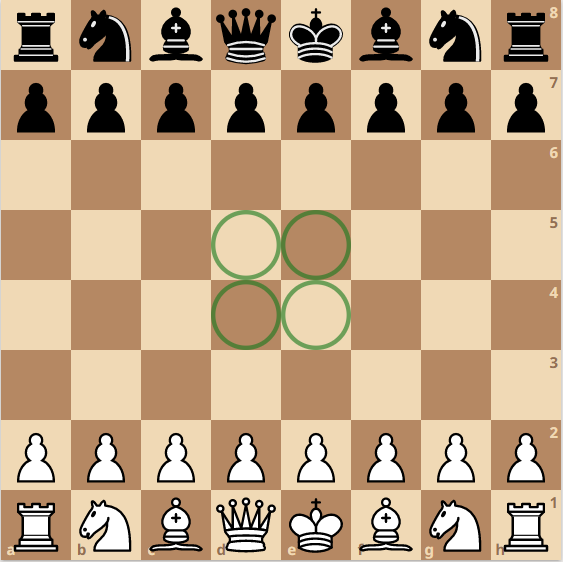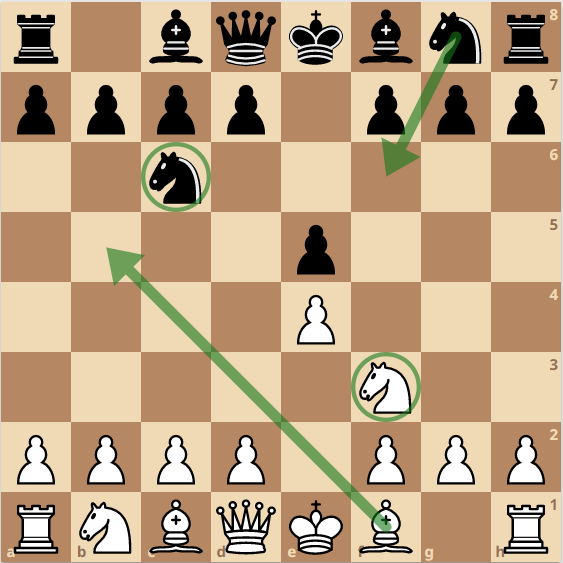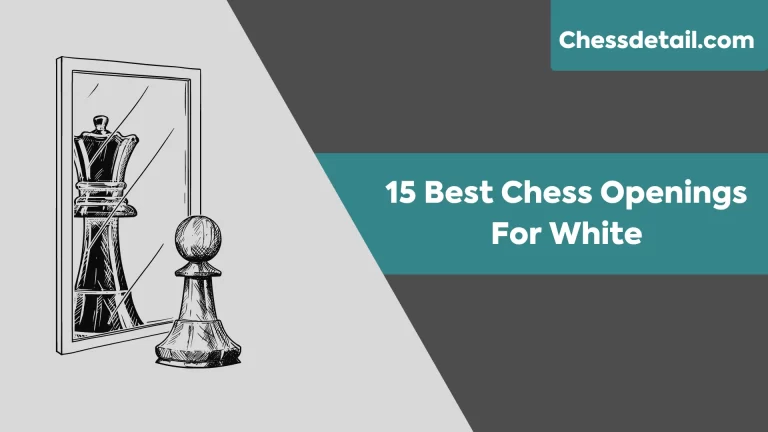How To Learn Chess Openings: A Step-by-Step Comprehensive Guide
Chess openings are the first moves of a chess game, and they are like the opening moves in a grand story. they set the stage for the battle that unfolds.
If you’ve ever wondered how to learn chess openings, you’re in the right place. We’ll take you through this fascinating aspect of chess in simple, straightforward language, free from jargon. By the end of this guide, you’ll not only know what chess openings are but also why they are crucial, how to approach them, and the steps to become a master of the chessboard.
So, let’s dive into the world of chess openings and explore how they can enhance your chess-playing skills. Whether you’re a beginner or looking to improve your game, this guide has something for everyone. Let’s get started!
Definition of Chess Openings:
Chess openings are like the first chapter in a book, setting the stage for the exciting story of a chess game. These are the initial moves made by players at the beginning of a chess match. In simple terms, chess openings are like a blueprint or a plan for the early part of the game.
Imagine a chessboard as a battlefield and the chess pieces as your troops. Chess openings help you decide where to position your troops strategically and how to start the battle. These moves lay the groundwork for your entire game, affecting your chances of success.
In essence, chess openings are the first steps you take in a game of chess, and they play a crucial role in determining your position, control, and options on the chessboard. Understanding and mastering these openings are fundamental to becoming a skilled chess player.
The Importance of Learning Chess Openings:
Learning chess openings is like building a strong foundation for a house. Just as a sturdy foundation supports the entire structure, knowing chess openings is essential for a successful game of chess. Here’s why they are so important:

1. Control of the Chessboard:
Chess openings allow you to claim your territory on the chessboard right from the start. They help you occupy key central squares and exert influence over the game’s direction.
2. Efficient Piece Development:
By following established openings, you ensure that your chess pieces, such as knights, bishops, and rooks, come into play quickly and effectively. This efficient development gives you more options and flexibility in your moves.
3. King Safety:
Chess openings often include a king’s move to safety through castling. This crucial maneuver protects your king, making it less vulnerable to attacks in the opening phase.
4. Avoiding Traps and Blunders:
Knowing chess openings helps you steer clear of common opening traps and pitfalls that less-experienced players might fall into. This can save you from losing valuable material early in the game.
5. Strategic Planning:
Chess openings set the stage for your overall strategy. Different openings lead to different types of positions and gameplay. By choosing openings that align with your style, you can play to your strengths.
6. Confidence Boost:
Having a strong opening repertoire boosts your confidence, especially when facing opponents who are less familiar with opening theory. It gives you a head start and makes you feel more in control of the game.
7. Time Management:
Knowledge of chess openings enables you to make moves more quickly in the opening phase. This can save you valuable time on the clock, which becomes crucial in later stages of the game.
In summary, learning chess openings is not just about memorizing moves; it’s about understanding the underlying principles and strategies. It’s like having a roadmap for your chess game, helping you navigate the early stages with confidence and efficiency. So, if you want to improve your chess skills, mastering chess openings is a vital step on your journey.
Improving Chess Opening Skills:
Mastering chess openings is an essential step on your path to becoming a skilled chess player. Here are some practical strategies to help you enhance your chess opening skills:
1. Study and Learn:
Start by studying and understanding the fundamental principles of chess openings. Learn about piece development, controlling the center, and ensuring king safety.
2. Build a Repertoire:
Begin with a few basic openings that align with your playing style. As you become more comfortable, expand your repertoire with a variety of openings.
3. Practice Regularly:
Practice makes perfect. Play games using your chosen openings regularly. This will help you become more familiar with the typical positions and ideas associated with them.
4. Analyze Your Games:
After each game, review and analyze your moves in the opening phase. Identify any mistakes or inaccuracies and learn from them.
5. Learn from Grandmasters:
Study games played by grandmasters. Pay attention to their opening choices, the ideas behind their moves, and how they handle different positions.
6. Use Chess Databases:
Utilize online chess databases and resources to explore various openings. These databases contain a wealth of information and games played by strong players.
7. Play against Different Opponents:
Play against opponents with varying skill levels and styles. This will expose you to different openings and help you adapt to various positions.
8. Seek Guidance:
Consider seeking guidance from a chess coach or more experienced players. They can provide valuable insights and personalized advice.
9. Stay Informed:
Keep up with the latest developments in chess openings. Opening theory evolves, so it’s essential to stay informed about new ideas and strategies.
10. Learn the Ideas, Not Just Moves:
Understanding the ideas and plans behind each opening move is more important than memorizing moves. This knowledge will serve you well in unfamiliar positions.
11. Experiment and Innovate:
Don’t be afraid to experiment with your own variations of openings. Innovation can lead to surprising and successful results.
12. Stay Patient and Persistent:
Improving your chess opening skills takes time and effort. Be patient with yourself and stay persistent in your practice.
Remember that becoming proficient in chess openings is not about memorizing a long list of moves but about understanding the principles, strategies, and concepts that underlie them. With dedication and continuous practice, you can steadily improve your chess opening skills and become a more formidable chess player.
The Basics of Chess Openings:
If you’re just starting your chess journey or looking to strengthen your foundation, understanding the basics of chess openings is crucial. Let’s explore these fundamental concepts in a clear and straightforward manner:
1. The Chessboard:
Chess is played on an 8×8 grid with 64 squares of alternating colors. Each player controls 16 pieces, including a king, queen, rooks, knights, bishops, and pawns.
2. Chess Pieces and Their Movement:
Understanding how each chess piece moves is vital:
King: Moves one square in any direction.
Queen: Moves diagonally, horizontally, or vertically across the board.
Rook: Moves horizontally or vertically in straight lines.
Knight: Moves in an L-shape: two squares in one direction and then one square at a right angle.
Bishop: Moves diagonally across the board.
Pawn: Moves forward one square but captures diagonally. On its first move, a pawn can move forward two squares.
3. The Role of Chess Openings:
Chess openings are the initial moves made by players at the start of a game. These moves set the stage for the rest of the match, determining the placement of your pieces and your overall strategy.
4. Control of the Center:
A key concept in chess openings is controlling the central squares (d4, d5, e4, e5). This control allows you to influence a larger portion of the board and is fundamental in many openings.

5. Piece Development:
Efficient piece development is crucial. Knights and bishops are typically developed early in the game. Knights often go to squares like f3/f6 and c3/c6, while bishops aim for g5/g4 and b5/b4.

6. King Safety:
Ensuring the safety of your king is essential. Castling, a special move, is used to tuck the king away behind a wall of pawns and rooks, providing it with greater safety.
Understanding these basics forms the foundation for learning chess openings. As you progress, you’ll delve deeper into specific openings and strategies, but a solid grasp of these fundamental principles will always serve you well on the chessboard.
Step-by-Step Guide on How to Learn Chess Openings:
Let’s break down the process of learning chess openings into five simple steps. Whether you’re just starting or looking to improve your skills, this guide will help you grasp the essentials.
Step 1: Grasping Fundamental Principles
- Controlling the Center: The center of the chessboard (squares d4, d5, e4, e5) is like the heart of the game. Controlling it gives you more space and influence. In the opening, aim to occupy these squares or control them indirectly.
- Developing Pieces: In chess, pieces like knights and bishops should come out to play early. This means moving them from their starting positions to more active squares. Quick piece development leads to a stronger position.
- Ensuring King Safety: The king is the most crucial piece. Castling is a move that makes your king safer by tucking it behind a wall of pawns and rooks. In the opening, make sure your king is secure.
Step 2: Starting with Basic Openings
- Italian Game: The Italian Game (1.e4 e5 2.Nf3 Nc6 3.Bc4) is a classic opening for beginners. It’s easy to understand and helps in controlling the center and developing pieces.
- Ruy Lopez: Another solid choice is the Ruy Lopez (1.e4 e5 2.Nf3 Nc6 3.Bb5). It’s a bit more advanced but still follows the fundamental principles of opening play.
Step 3: Learning Key Openings
- Sicilian Defense: If you like a bit of complexity, try the Sicilian Defense (1.e4 c5). It’s a sharp and aggressive opening where both sides fight for control.
- Queen’s Gambit: The Queen’s Gambit (1.d4 d5 2.c4) is a strategic choice. It’s all about pawn structure and control, making it great for learning key concepts.
- King’s Indian Defense: The King’s Indian Defense (1.d4 Nf6 2.c4 g6) is a flexible opening, often leading to rich and dynamic positions. It’s perfect for players who enjoy a more complex game.
Step 4: The Importance of Practice
- Playing Games: Practice makes perfect! Play chess games using the openings you’ve learned. This is where you put your knowledge into action and learn from your mistakes.
- Analyzing Gameplay: After each game, take some time to review your moves, especially the opening phase. Look for improvements and understand where you went right or wrong.
Step 5: Studying Grandmaster Games
- Advanced Strategies: Grandmaster games are like masterclasses in chess strategy. Study them to see how top players handle complex positions and execute advanced strategies.
- Tactical Insights: These games reveal intricate tactics and combinations that can turn the tide of a game. By analyzing these, you’ll improve your tactical vision and sharpen your skills.
Wrapping Up
This step-by-step guide provides a structured approach to learning chess openings. Mastering the fundamentals, practicing, and studying the games of grandmasters will help you become a more confident and skilled chess player. Enjoy your journey to chess master



